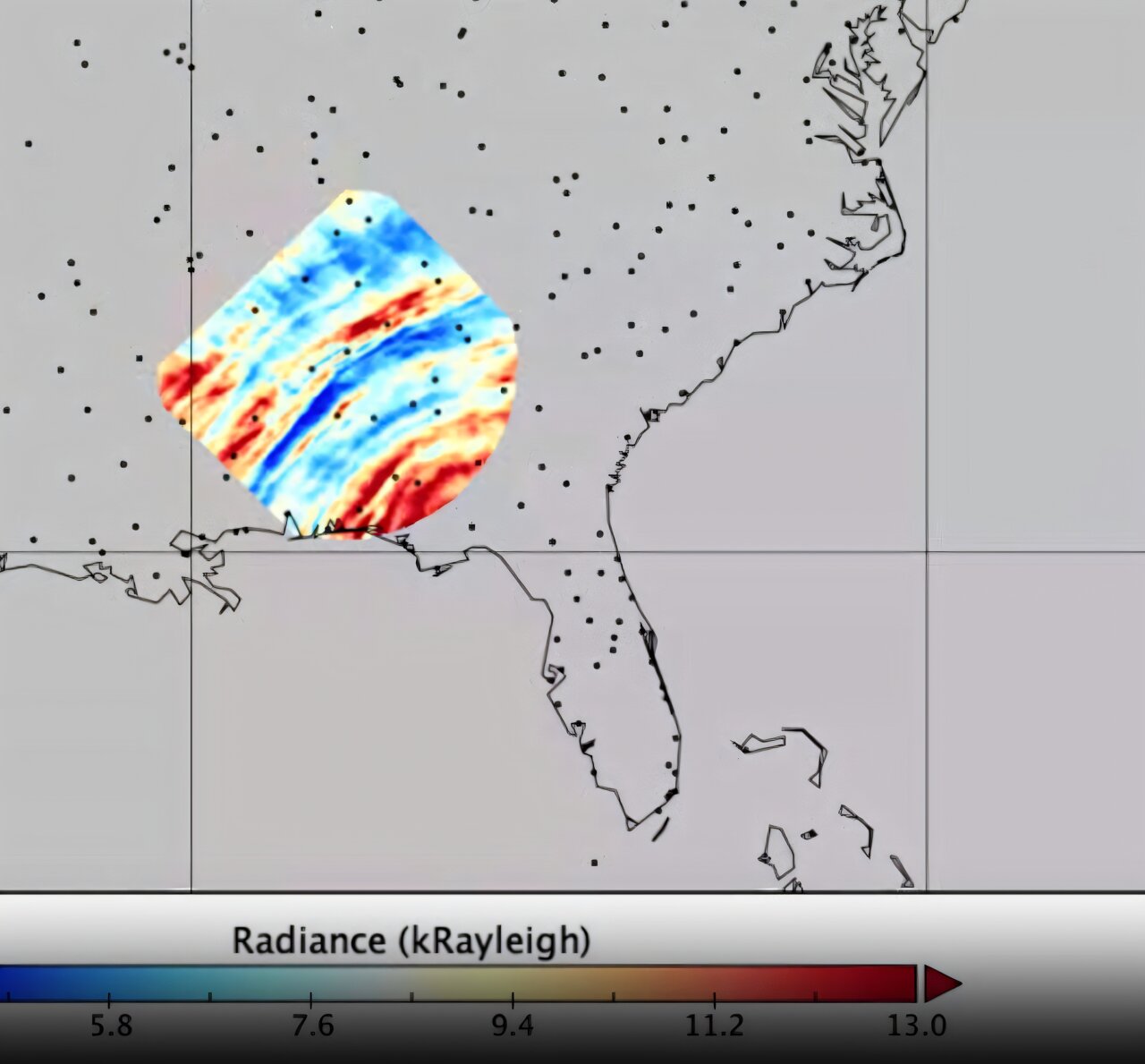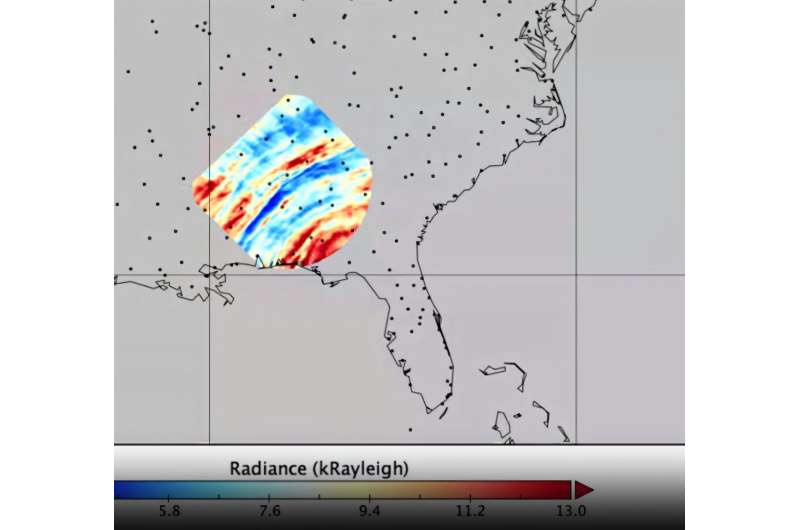

On Sept. 26, 2024, Hurricane Helene slammed into the Gulf Coast of Florida, inducing storm surges and widespread impacts on communities in its path. At the same time, NASA’s Atmospheric Waves Experiment (AWE), recorded enormous swells in the atmosphere that the hurricane produced roughly 55 miles above the ground. Such information helps us better understand how terrestrial weather can affect space weather. This is part of the research NASA does to understand how our space environment can disrupt satellites, communication signals, and other technology.
These massive ripples through the upper atmosphere, known as atmospheric gravity waves, appear in AWE’s images as concentric bands (artificially colored in red, yellow, and blue in the video) extending away from northern Florida.
“Like rings of water spreading from a drop in a pond, circular waves from Helene are seen billowing westward from Florida’s northwest coast,” said Ludger Scherliess, who is the AWE principal investigator at Utah State University in Logan.
Launched in November 2023 and mounted on the outside of the International Space Station, the AWE instrument looks down at Earth, scanning for atmospheric gravity waves, ripple-like patterns in the air generated by atmospheric disturbances such as violent thunderstorms, tornadoes, tsunamis, wind bursts over mountain ranges, and hurricanes. It does this by looking for brightness fluctuations in colorful bands of light called airglow in Earth’s mesosphere. AWE’s study of these gravity waves created by terrestrial weather helps NASA pinpoint how they affect space weather.
These views of gravity waves from Hurricane Helene are among the first publicly released images from AWE, confirming that the instrument has the sensitivity to reveal the impacts hurricanes have on Earth’s upper atmosphere.
Provided by
NASA’s Goddard Space Flight Center
Citation:
Hurricane Helene’s gravity waves revealed by NASA’s AWE (2024, November 7)
retrieved 7 November 2024
from https://phys.org/news/2024-11-hurricane-helene-gravity-revealed-nasa.html
This document is subject to copyright. Apart from any fair dealing for the purpose of private study or research, no
part may be reproduced without the written permission. The content is provided for information purposes only.